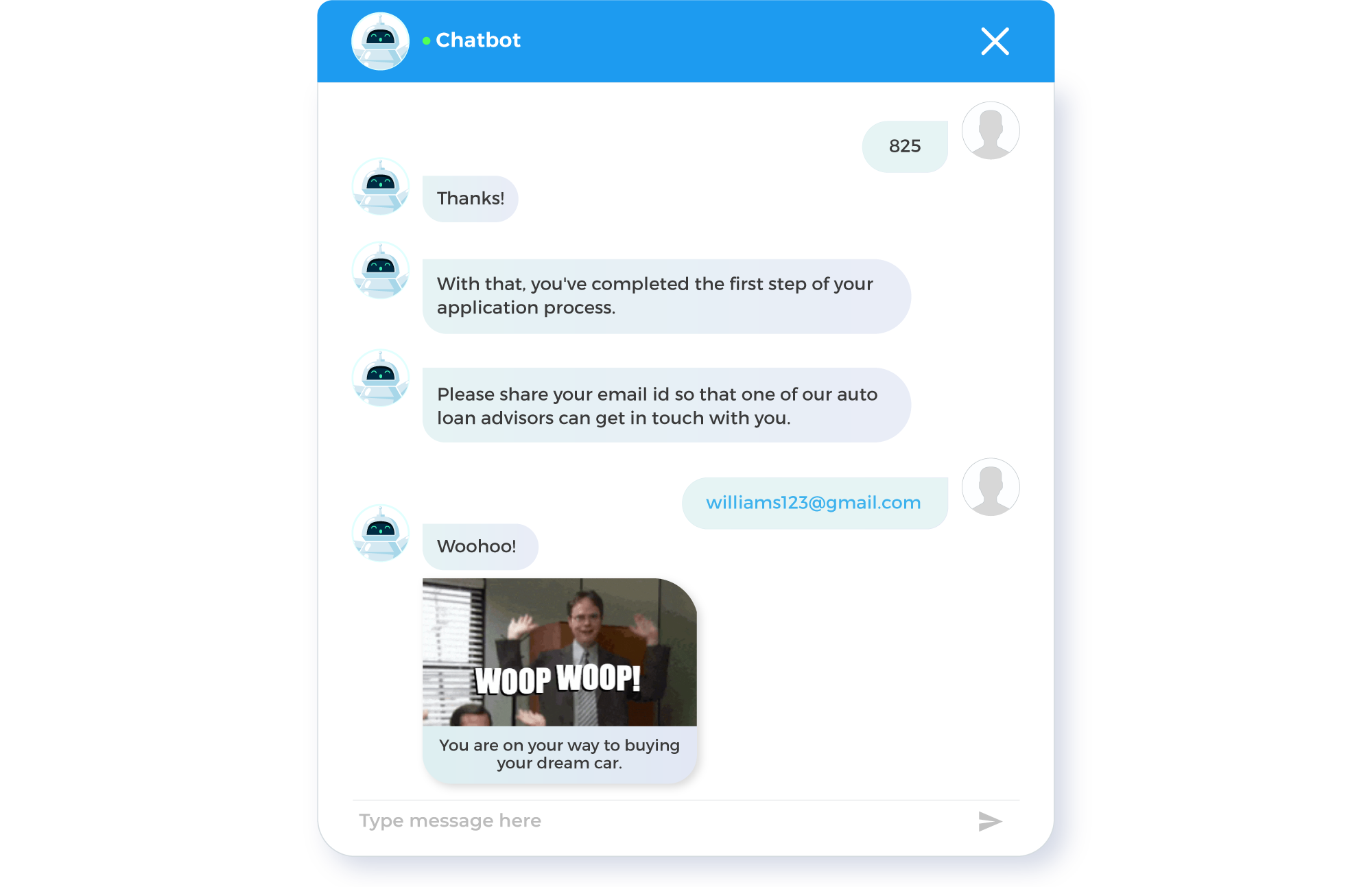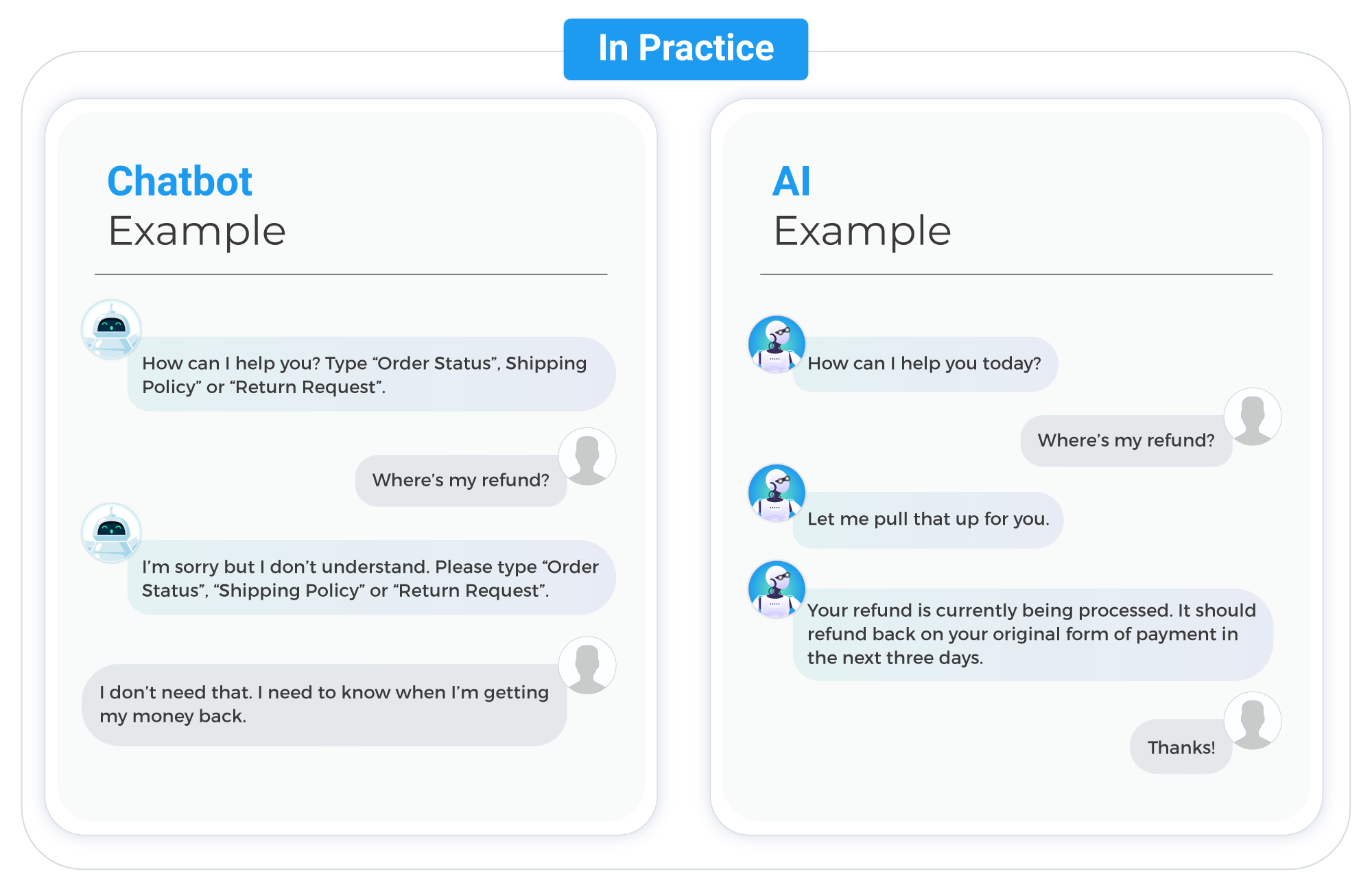
The worldwide chatbot market is projected to amount to $454.8 million in revenue in 2027, up from 40.9 million dollars in 2018.
The chatbot wave is at an all-time high, and there isn’t a single industry that remains unaffected. So, going into 2022, we thought of acquainting you with the top six trends that’ll help you ride the chatbot wave without hitting the proverbial wall. Let’s get rolling:
1. Chatbots with Human Touch Are the Future
As an organization scales, it becomes increasingly strenuous for its staff to be everywhere at once, thereby making automation inevitable. But you cannot create, deepen, and develop customer relations with technology alone. This is where a tinge of human touch becomes invaluable.
Fun Fact: A PwC study revealed that 59% of consumers believe companies have lost the human element. In fact, 82% say they’d rather talk to a human than with automated, robotic technologies.
If done right, an AI-driven chatbot can combat digital fatigue. It identifies user intent and mimics human conversations to deliver hyper-personalized results. It also picks up patterns from interactions to fathom customer behavior and suggest additional options while answering queries. And if the user still fails to find a suitable answer, the intelligent chatbot puts together nuggets from the conversation and passes them on to a live agent within the same chat window, ensuring seamless handoff.
.@Carvana just absolutely crushing it with the conversational chatbot copy pic.twitter.com/esXG3R5sRl
— Lianna Patch (@punchlinecopy) July 15, 2021
2. Rich Media Chatbots – The New Black
There is no denying that rich media keeps your audience hooked. After all, GIFs, emojis, sound clips, etc., make the chat experience more immersive and fun. But as an old proverb says, excess of anything is bad. Your bot, too, needs to be smart enough to understand which situation can use some rich media and when to keep that genie in the bottle.
Rich media is more captivating than walls of text.
One of the most significant parameters to consider while designing rich media bots is load times. You can find the perfect GIF for your chatbot, but if it takes 20-30 seconds to load, it’s futile. In such a scenario, the user will either lose attention and drop the conversation before the GIF uploads or continue the chat without looking at it. By and large, load times are a source of friction in your conversational flow, and they can make or break your bot’s performance.

3. Voice Bot is the Next Big Thing
Users are already accustomed to starting their days with “Alexa, turn on the lights” or “Ok Google, add avocados to my grocery list.” And, they expect a similar experience while interacting with any brand’s virtual assistant. With voice becoming a part of our everyday things, like mobile devices, cars, and even homes, it will not be a big revelation if it goes on to become the new norm.
AI-conversational bots are capable of assisting over both text and voice. Moreover, the trend of automating customer engagement will continue to soar higher in 2022. To sustain the cutthroat competition and deliver a seamless experience to your users, you’d need a messaging platform that offers both text and voice-based interfaces.
4. Emotive Chabots are Indispensable
Emotionally intelligent chatbots are capable of understanding human emotions from a conversation and responding empathetically. By tapping into NLP and sentiment analysis, they can help you score big on customer experience. An example of technology blazing a trail in EQ is when AI uses facial feature detection techniques to detect a person’s mood.
Emotive chatbots extract information from your speech and text to determine how you might be feeling.
5. Chabot Analytics to Ameliorate Performance
“If you can’t measure it, you can’t improve it.” – Peter Drucker
For any business, analytics or insights engines play a crucial role in analyzing data and tracking performance to better understand their customers’ mindsets. With chatbot analytics, you can keep tabs on the questions asked, answers delivered, and queries forwarded to agents. Then, you can leverage these learnings to improve your bot performance in real-time.
Fun Fact: An Accenture report revealed that 56% percent of executives say conversational bots are driving disruption in their industry, and 43% report their competitors are already implementing the technology.
6. Embark on Unsupervised, Yet Controlled Journey with Self-Learning Bots
Training bots for every conversation is a breeze, only until the raw data is limited. But as your organization snowballs and the information jungle grows, your supervised bots start struggling to have meaningful conversations. This is where a self-learning chatbot can save the day.
Self-learning bots automatically analyze the pattern in every interaction to self-train themselves for various intents. This way you can keep them updated without training for every new utterance or feeding new data.

Want to Unveil the Secret of a Successful Chatbot?
Chatbots are not a passing marketing fad; they are here to stay. But building a bot that doesn’t stumble over natural interaction is crucial. Else, you might drive customers away instead of impressing them. If you want to overcome the technical barriers to build an exemplary conversational AI, then this eBook is your go-to guide.
On the flip side, if you do not intend to build a bot from scratch and are looking for a virtual assistant that’ll reduce agent workload and support costs by holding contextual human-like conversations, then request a demo of a ‘best-in-breed,’ intelligent chatbot.
















